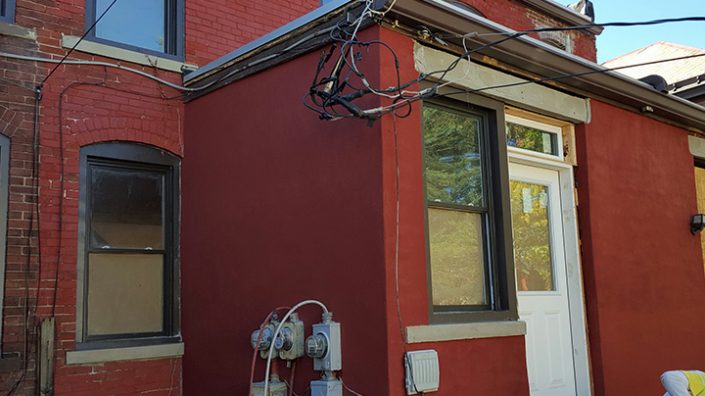

- Exterior plaster repair how to#
- Exterior plaster repair skin#
- Exterior plaster repair Patch#
- Exterior plaster repair crack#
Step 3: Apply and Cross-Scratch Plasterįill in the hole with plaster using a 10” wallboard knife. Ask someone at your local True Value hardware store for the right bonding agent for the plaster. To make sure the dry plaster and lath do not absorb too much moisture, use a paint brush to apply a latex bonding agent to the lath and exposed plaster. Using a utility knife, smooth the inside edges of the hole. Be sure not to chip too hard or you will damage the lath, which is the wood structure that supports the plaster. Remove the damaged plaster by using a cold chisel and a ball peen hammer to chip the damaged plaster off the wall.
Exterior plaster repair how to#
How to Repair Holes in Plaster Step 1: Remove Damaged Plaster
Exterior plaster repair Patch#
Wipe the patch down with a damp sponge and paint the area with True Value Eas圜are Ultra Premium Interior Primer/Sealer and let it dry completely before continuing with your paint base coat. Wipe away sanding dust and debris with a damp cloth. Using a piece of fine-grit sandpaper, sand the patched area until it is smooth. Wear safety goggles and a dust mask or respirator if you will be sanding a large repair area. Apply a second coat of joint compound and feather this layer out 6” to 12” from the repaired area to help it blend in further. Allow it to dry and then sand it smooth with fine-grit sandpaper. Feather your coverage about 3” all around the taped area so that it will blend in with the rest of the wall. Apply the joint compound with a 4” wallboard knife over the tape until it is completely covered.
Exterior plaster repair crack#
This will help keep the crack from growing. First, apply a strip of self-adhesive fiberglass wallboard tape across the entire length of the crack. For larger cracks, you can use a joint compound. Let the spackle dry for the amount of time specified by the manufacturer. Apply small amounts with a 2” putty knife until the crack is covered.

For the smallest cracks, you can use spackle. You can also use spackle and a joint compound to patch cracks. The room must stay at this temperature during plastering and until the plaster has completely set. Keep the room at this temperature at least 24 hours before plastering to ensure the walls are completely dry. The best temperature for plastering is between 55 degrees and 70 degrees. Helpful TipsĮxcess moisture in the wall or room can affect the plastering, so make sure to fix any leaks or causes of moisture several weeks before plastering.

Wear a sanding respirator to prevent inhalation while breaking dried plaster or when mixing.
Exterior plaster repair skin#
When plastering, wear safety goggles, a long sleeve shirt and cotton work gloves for eye and skin protection.

Crack repairs usually need only one layer of plaster. Apply a layer of plaster to the crack with a 4” wallboard knife, making sure the layer is even with the rest of the wall. Pour the plaster from the bucket into a mud pan. Follow the manufacturer’s instructions to mix dry plaster with water in a large bucket. Dampen the area with a spray bottle and water. Use a cloth or rag to wipe away dust and debris. Smooth and remove loose plaster pieces and any jagged edges on the surface around the crack with a putty knife. Helpful TipĪ shop vacuum is a great tool for cleaning up sanding dust. Close off the room using plastic sheeting and painter’s tape and cover vents to keep sanding dust from travelling through your HVAC system. This will protect the floor from any spilled or splattered plaster or joint compound and make clean up a bit easier, as much of the dust from sanding will collect on the drop cloths. How to Fix Cracks in Plaster Step 1: Prepare the Roomīefore starting, cover the floor with plastic drop cloths and fasten the cloths in place using painter’s tape. It can, however, require a bit more extra time and skill than patching a hole in drywall. If you have holes or cracks in your plaster walls or ceilings, repairing them isn’t difficult. Many older homes may still have some walls and ceilings made of plaster and lath instead of the now standard drywall or wallboard.


 0 kommentar(er)
0 kommentar(er)
